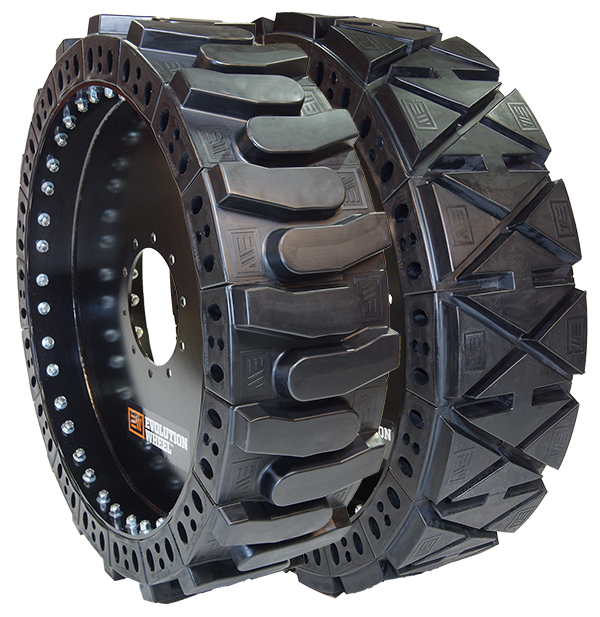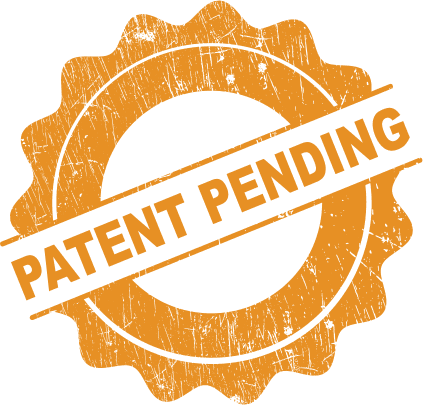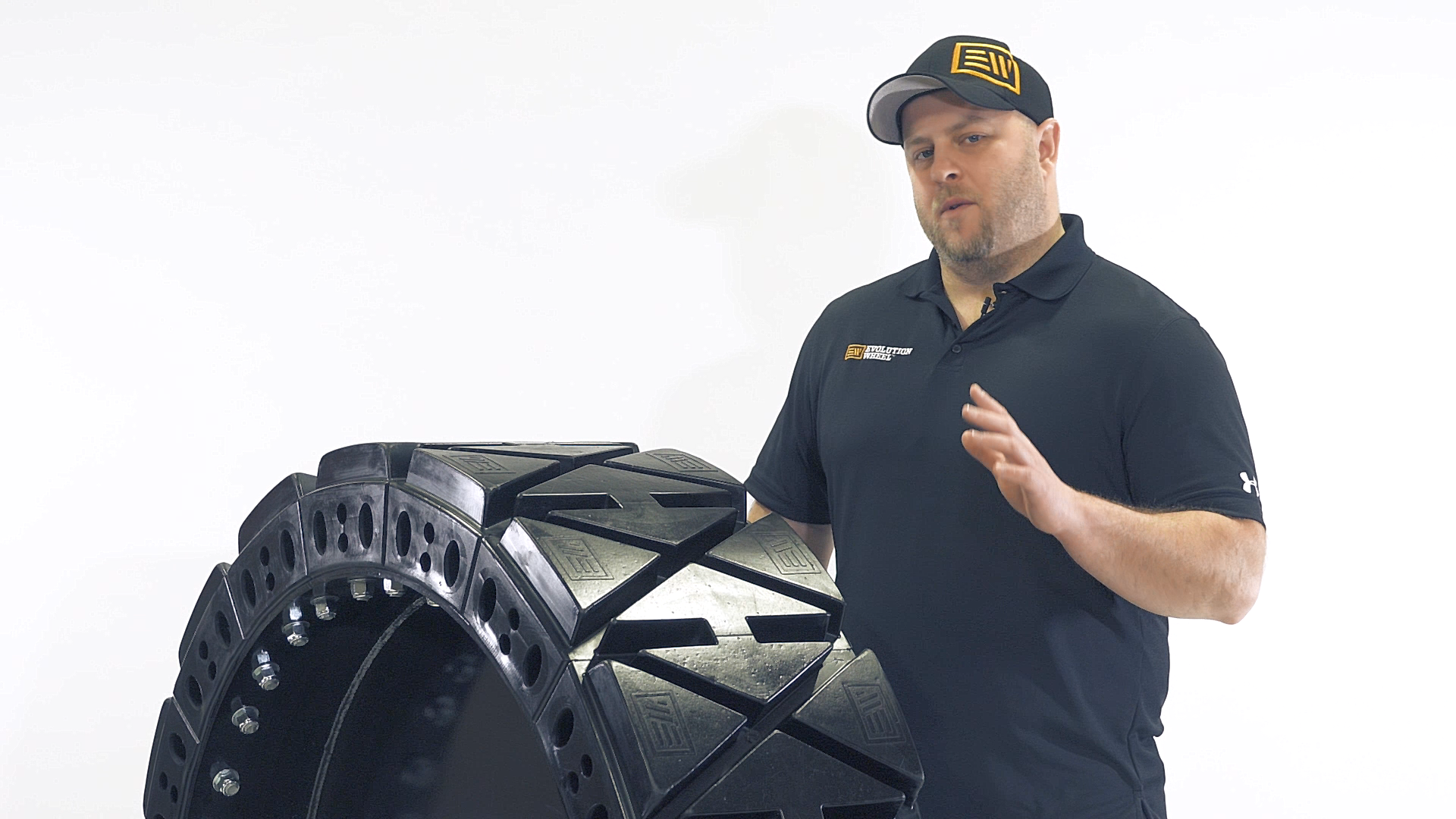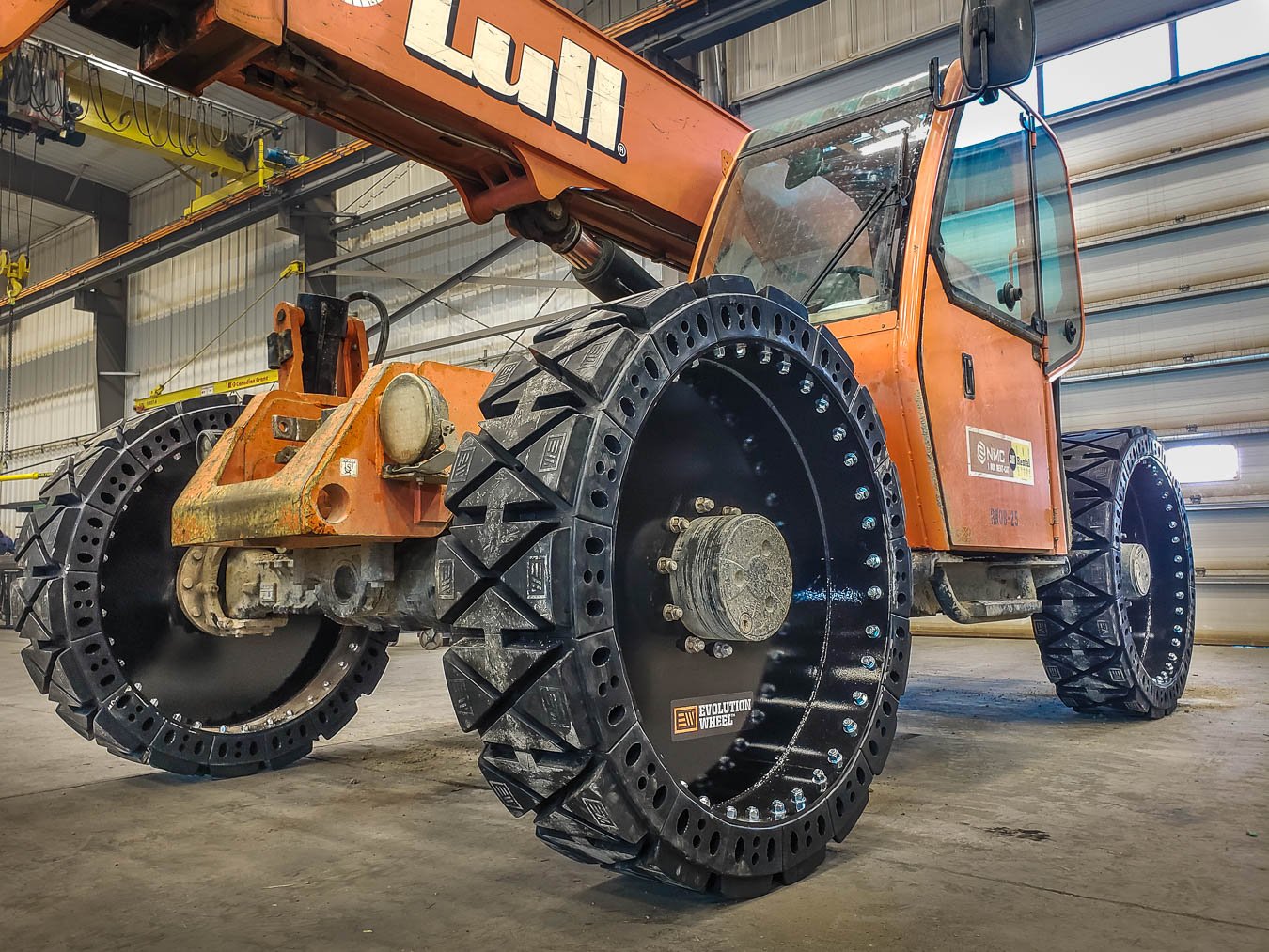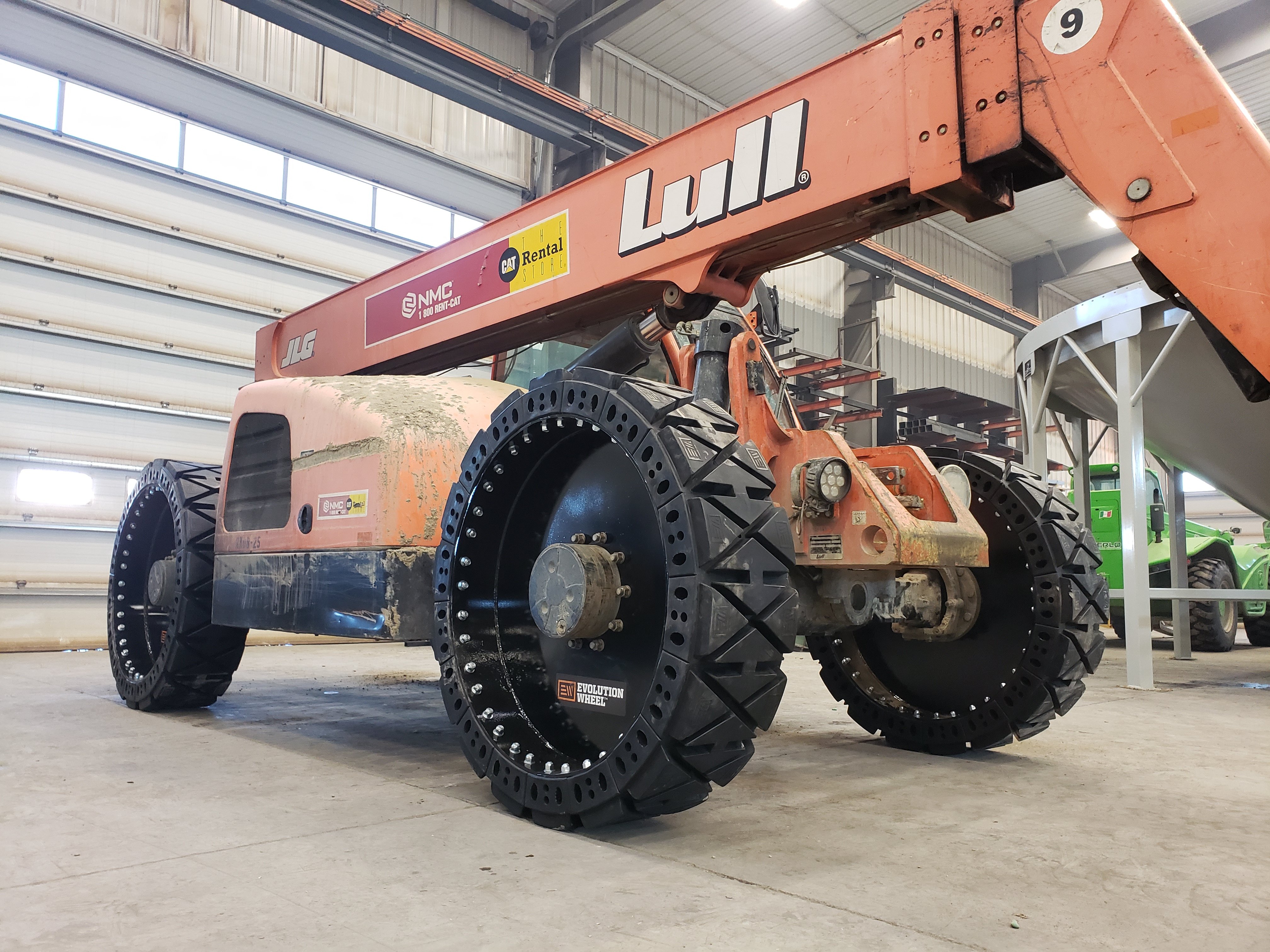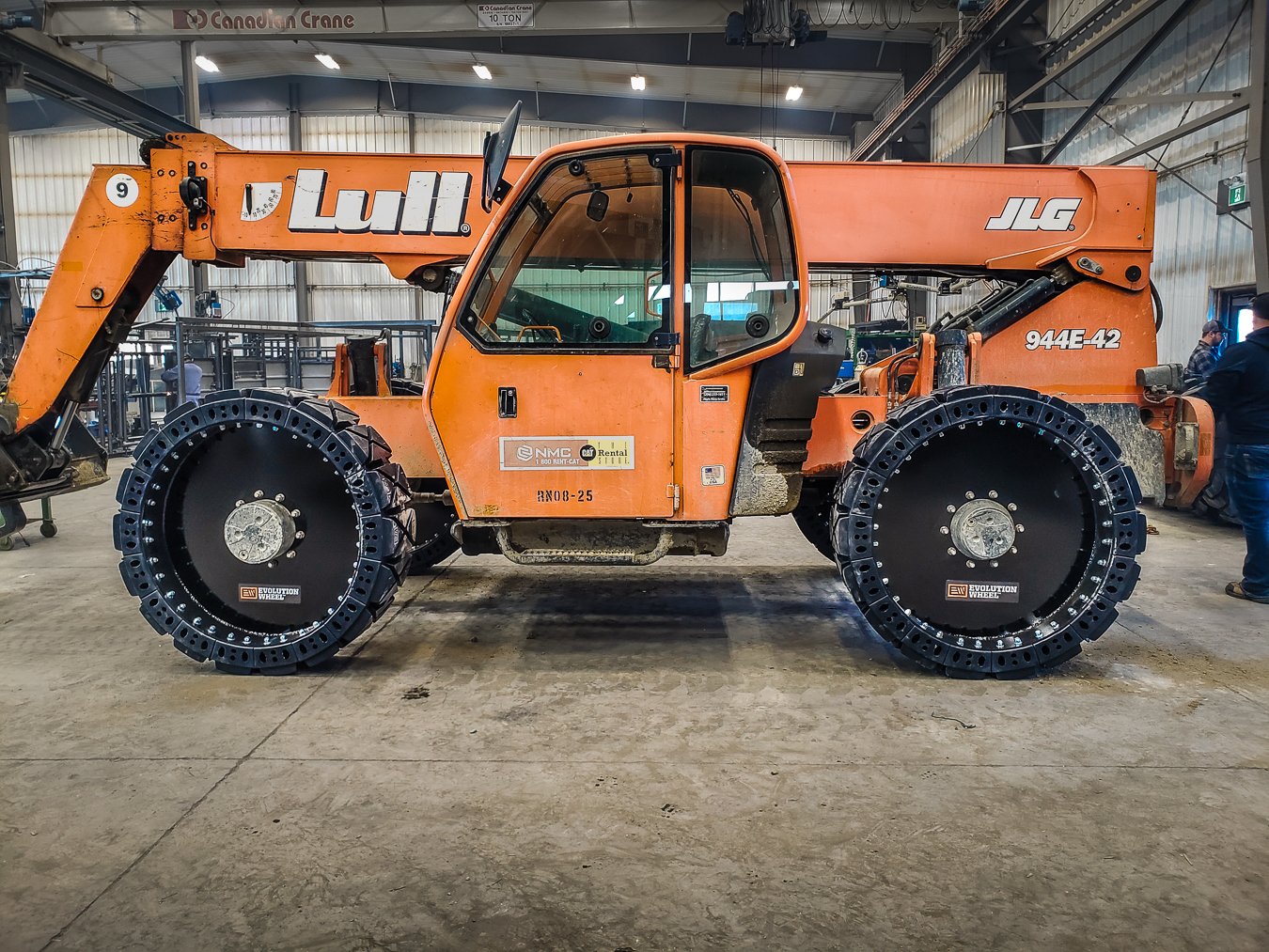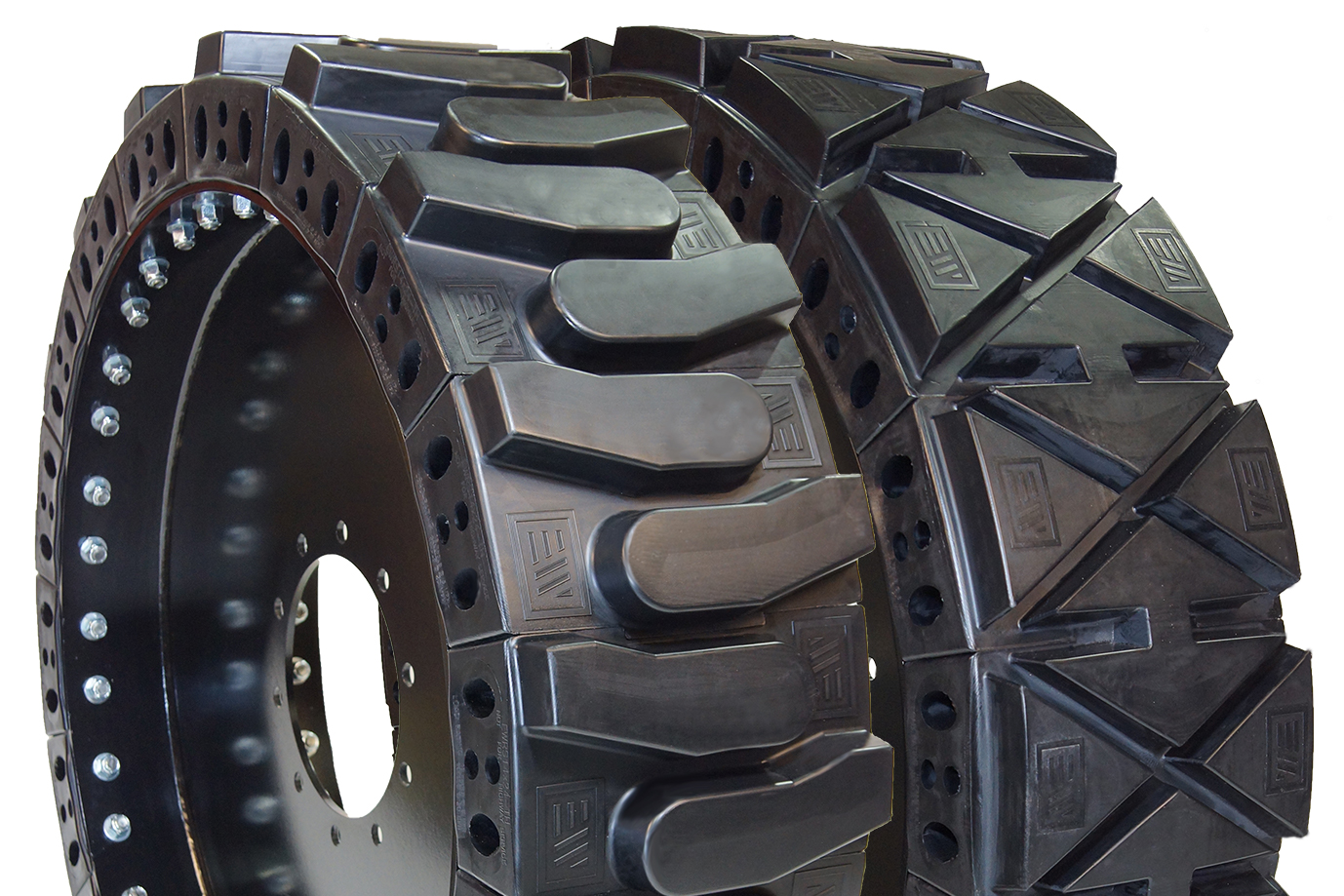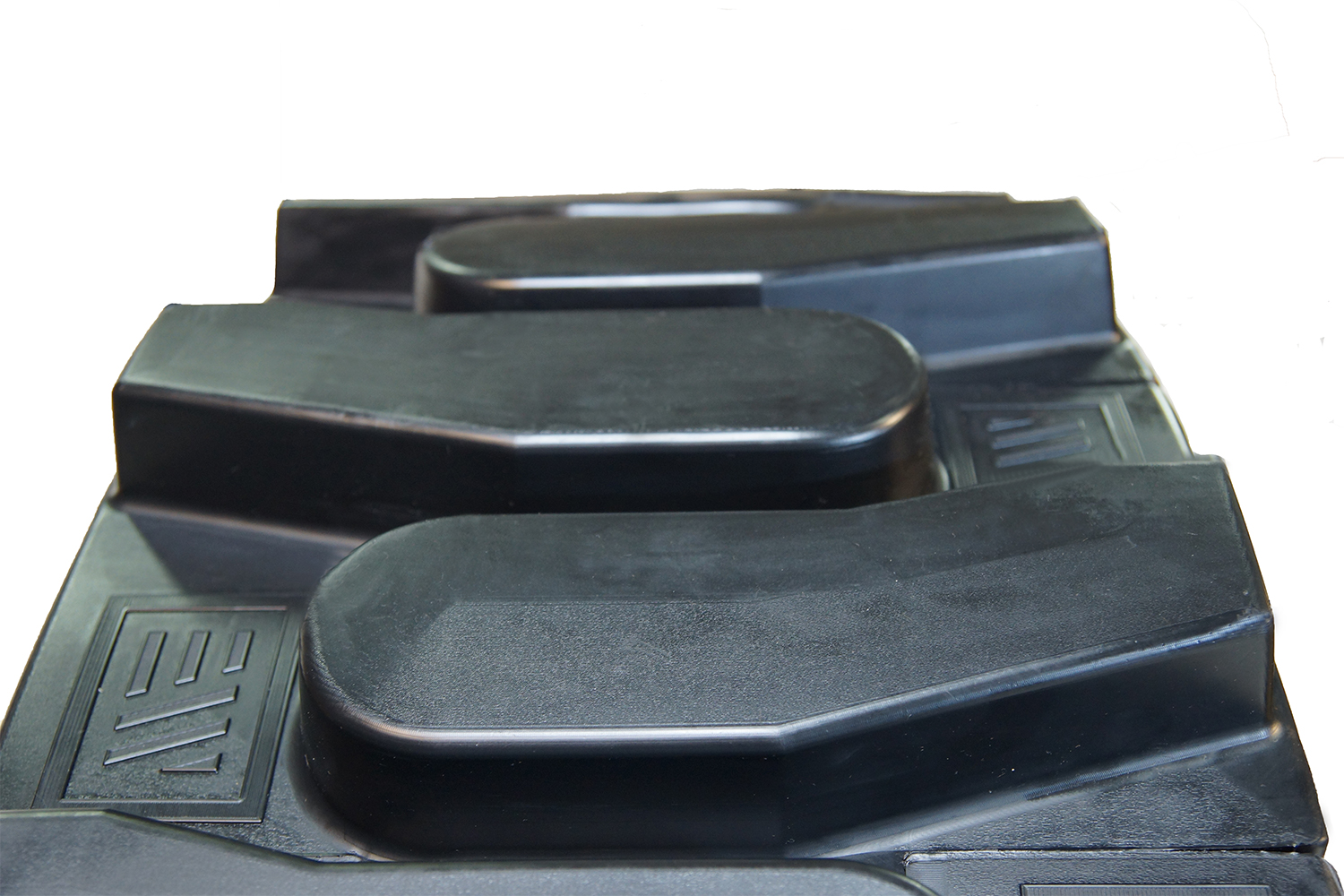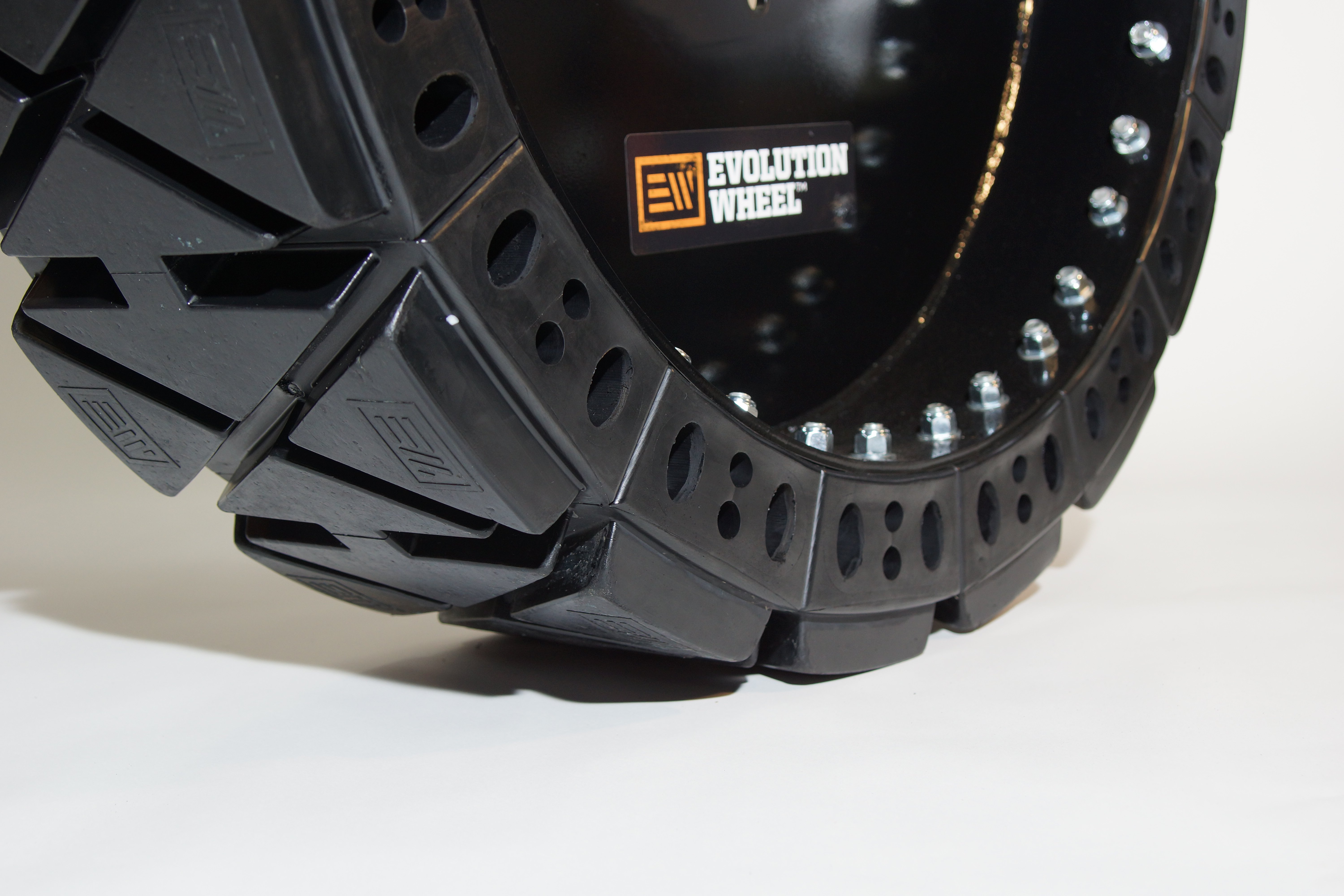JCB Solid Telehandler Tire
Is your telehandler ready for and upgrade? Evolution wheel offers a full line of JCB Solid telehandler tire to meet your needs.
EWRS-TH SERIES
The EWRS-TH series of jcb solid telehandler tire were designed to meet the needs of today's job site demands. We came up with a way to offer you serviceability, traction and maximum stability all in one!
Our EWRS-TH series of jcb solid telehandler tire is available in your choice of an all terrain (AT) or hard surface (HS) tread pattern to match with your specific application that will ensure optimal traction and increased wear life.
How many pneumatic or foam filled jcb solid telehandler tire have you had to change on your jobsite because of damage or sidewall gashes? With health and safety being as important as it is today a serviceable option was needed. Our team of engineers developed our EWRS-TH series of jcb solid telehandler tire to be easily repaired if damaged, although we are not sure you will need to with the quality that went into our design and components.
With serviceable tire sections, the need for a service truck and specialized technicians is all but eliminated. We have reduced your service tooling down to only a 15/16" wrench in your operator's back pocket and repair parts are readily available in your nearest onsite storage container or in the toolbox of your pickup.
jcb solid telehandler tire work under a variety of conditions but one thing remains the same, safety is paramount. For this reason, we designed our EWRS-TH series of jcb solid telehandler tire with maximum stability and load bearing capacity. A combination of our specially engineered core hole design and bidirectional tread pattern provide a very consistent and predictable loading profile.
To learn more about the EWRS-TH series of jcb solid telehandler tire, give us a call or submit a quote request to speak with one of our product specialists. We will match the right tire to your specific jobsite needs.
| Actual Tire Dimensions | |||||||
|---|---|---|---|---|---|---|---|
| Tire Size | Overall Diameter | Width | Rim Diameter | Wearable Tread Depth | Weight | Load Rating (5MPH) | Load Rating (20MPH) |
| ----- | Inch (mm) | Inch (mm) | Inch (mm) | 32nd (mm) | lb (kg) | lb (kg) | lb (kg) |
| 14x24 | 52" | 14" | 41" | 52 | 850 lb | 18,750 lb | 9,000 lb |
| 52X14-40 | (1321) | (356) | (1041) | (42) | (386 kg) | (8,523 kg) | 4,091 kg |
Solid Telehandler Tires vs Foam Filled Telehandler Tires
One of the biggest concerns for contractors is avoiding flat tires on their equipment. Therefore, it makes sense to look for a tire solution that fixes this problem. There are main options: solid telehandler tires and foam filled telehandler tires. Both will prevent flats, but there are still significant differences between them. Here are some of the main ones.
Foam Filled Telehandler Tires
At first glance, these can seem like a great solution to the problem of flats. Instead of being filled with air, they are filled with thick foam. The foam won't leak out through small holes, like those made by driving over nails, and you will typically see a significant reduction in the number of flat tires. However, this comes with trade-offs and costs that you will likely find unacceptable over time if you run a machine long enough.
One of the biggest trade-offs is that foam-filled tires easily pick up sidewall damage the same as a pneumatic tire. When the damage is severe enough, the foam will start to squeeze out of the tire sidewall. This type of damage is common on construction sites and in industrial areas. Once it happens, there is no way to fix the tire. It must be replaced at great expense. You will need to remove the tire off the machine, purchase a new tire, send the new tire out to be filled, and then install the new tire back on the machine. All this while your telehandler machine is out of service costing you expensice downtime. Another significant cost is the fact that the tire you replaced likely still had lots of wear life left in it, meaning that you’re never getting the value for your money.
Another unexpected cost associated with the replacement of foam-filled tires is higher labor expenses and service calls. That's because, unlike air-filled tires, foam-filled ones typically have to be cut off of the rim. This is a slow and demanding process that increases labour hours significantly, while the telehandler is out of service the whole time. Depending on what you'd normally be using that equipment for, the delay could cost your company thousands in downtime. While foam filled telehandler tires are a lower cost up front, they are typically significantly more over the lifespan of the tire.
Solid Telehandler Tires
Solid telehandler tires are made entirely of a consistent rubber compound with no air or foam that can leak out of the tire. This has more benefits than simply preventing flats. There is nothing inside to leak no matter what type of damage a tire gets, so they never flatten under any circumstances. They can handle cuts and chunking without compromising the integrity of the tire. When it finally does come time to replace them, either the tire and rim can be replaced at the same time, a new tire can be pressed on or new segments can be installed if the tire is serviceable.
Other benefits of solid telehandler tires include traction, stability and extended wear life. Solid telehandler tires will typically have a taller, wider and deeper tread than pneumatic and foam filled equivalents because the absence of a tire casing allows for greater design possibilities. Stability is increased because there is no air or foam to leak out of the tire or cause bouncing if the machine hits a bump, the rubber also compresses at a consistent and predictable rate as it is loaded. Due to the increased lug sizes and typically harder rubber compounds solid telehandler tires will also typically have a longer wear life than foam filled telehandler tires, up to three times in most cases.
What Makes Evolution Wheel’s Solid Telehandler Tires Different?
Our segmented telehandler tires take these benefits even further. Since no tire is completely invincible, we make ours with easy servicing in mind. This saves you significant amounts of time and money when the time does come to repair the tire. Our design ensures that you will likely never have to replace the entire tire, just repair it as needed if damage occurs.
The key to this benefit is that our tires are made of separate segments instead of being molded as a single unit. Each segment is separate from all of the others, so if one part gets damaged, you only need to replace that one segment. Each segment of our tire bolts onto the rims as individual pieces, so the tire can be fully fixed without even being removed from the machine. This design saves you the cost of an entire new tire and service call, your equipment can get back to work within just a few minutes and the operator can fix the tire on their own.
Another benefit to Evolution Wheel’s segmented solid telehandler tires is that they easily conform to ANSI standards. When you replace a damaged segment, we can match your replacement segment to the rest of your tire depth measurements. Or if you have a spare segment in your toolbox you can grind it down to match the rest. It’s quick and easy all while keeping the tire on the telehandler. Replacing an individual segment is much cheaper compared to replacing an entire tire.
Another advantage to Evolution Wheel’s segmented solid telehandler tire is that it comes in two different tread patterns to match your application. A Hard Surface tread pattern for those mainly on concrete and other hard surfaces, and an All Terrain tread pattern for those in mud, sand, and rocks who need added traction.
Call Us Today!
To learn more about our segmented solid telehandler tires, contact one of the product specialists at Evolution Wheel and they can take an in depth look at your exact tire needs. We'll be glad to discuss our telehandler tires and other equipment tires in detail.
